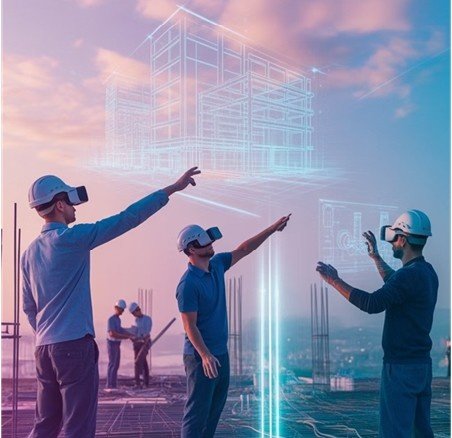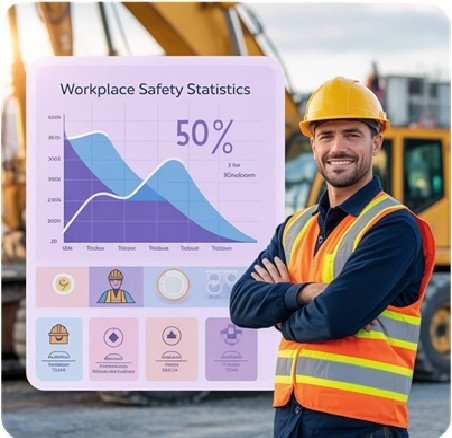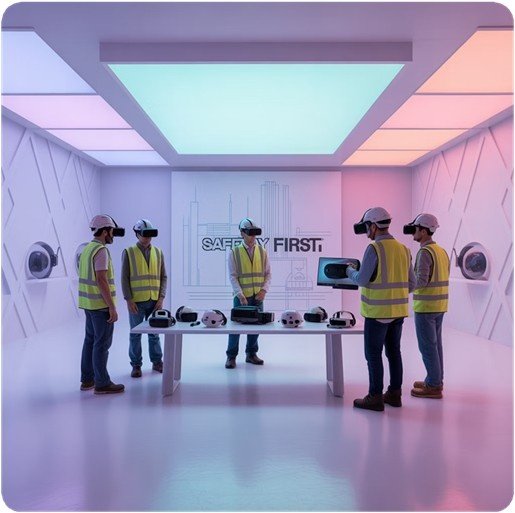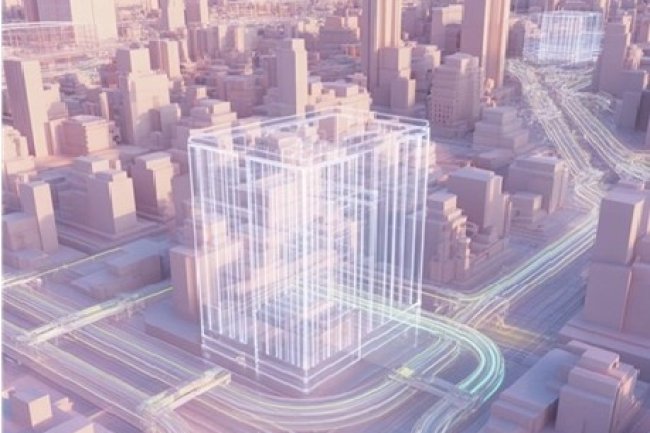Revolutionizing Construction Safety: BIM Meets Virtual Reality Training
The construction industry faces a difficult reality: workplace fatalities occur at rates far higher than in most other sectors. Innovative technology is beginning to change how safety training is approached. By combining Building Information Modeling (BIM) with Virtual Reality (VR), construction companies across the United States are creating immersive, risk-free environments where workers can learn to spot hazards and practice safety protocols before entering real job sites.

The Construction Safety Challenge
|
Construction remains one of America’s most dangerous industries. Traditional safety training methods—classroom presentations, printed materials, and basic simulations—often fail to prepare workers for real-world scenarios. Workers struggle to retain information from static materials, and it is nearly impossible to replicate the complexity and unpredictability of actual construction environments in traditional training settings. The consequences are severe: injuries, fatalities, project delays, legal liabilities, and substantial financial costs. The industry urgently needs training solutions that bridge the gap between theoretical knowledge and practical application. |
|
What is BIM-Powered Virtual Reality Training?
BIM-powered VR training represents a groundbreaking fusion of two powerful technologies. Building Information Modeling creates detailed, data-rich 3D models of construction projects, while Virtual Reality provides immersive, interactive experiences that simulate real-world environments.
Detailed 3D building models are developed with precise architectural, structural, and MEP data
BIM models are converted into interactive VR environments with realistic physics and hazard scenarios
Common construction hazards are programmed into the virtual environment for training purposes
Workers navigate virtual job sites, identify risks, and practice safety procedures in real-time
Key Benefits of BIM-VR Safety Training
Workers can experience dangerous scenarios without physical risk, allowing them to learn from mistakes in a safe environment. They can practice emergency responses and hazard recognition repeatedly until procedures become second nature.
Immersive VR experiences create stronger memory formation compared to traditional training methods. The multi-sensory engagement helps workers retain safety information longer and apply it more effectively on actual job sites.
While initial setup requires investment, VR training eliminates ongoing costs of physical training spaces, materials, and potential work stoppages. Training can be conducted anywhere, anytime, without disrupting construction schedules.
VR systems track user behavior, reaction times, and decision-making patterns, providing detailed analytics on training effectiveness and identifying areas where individual workers need additional focus.
Real-World Applications and Success Stories
Major construction companies across the United States are already implementing BIM-VR training programs with impressive results. Companies like Turner Construction, Skanska, and Mortenson have reported significant reductions in safety incidents and improved worker confidence.
Workers practice identifying fall hazards, proper harness use, and emergency response procedures on virtual high-rise construction sites.
Virtual crane operations, excavator blind spots, and equipment interaction scenarios teach workers safe practices around machinery.
Safe chemical storage, spill response, and proper protective equipment usage in realistic virtual environments.
Practice evacuation routes and emergency procedures for various scenarios including fires, structural failures, and severe weather.
Implementation Considerations
|
|
Technical Requirements
Training Considerations
|
Successful implementation requires careful planning and collaboration with experienced technology providers. Companies like Consac offer comprehensive BIM and digital solutions that can streamline the integration of VR training systems with existing project workflows.
What's Your Reaction?


















